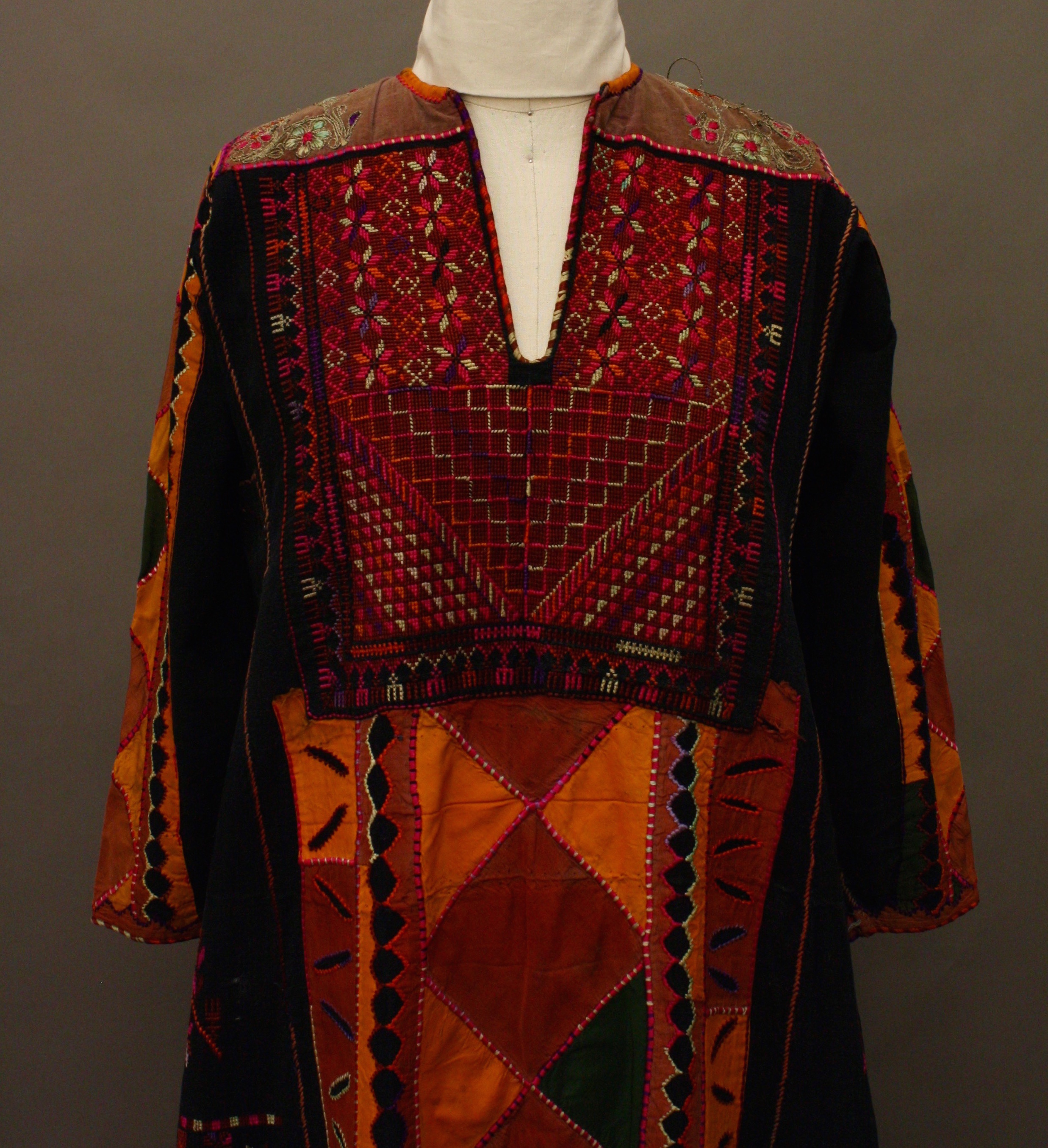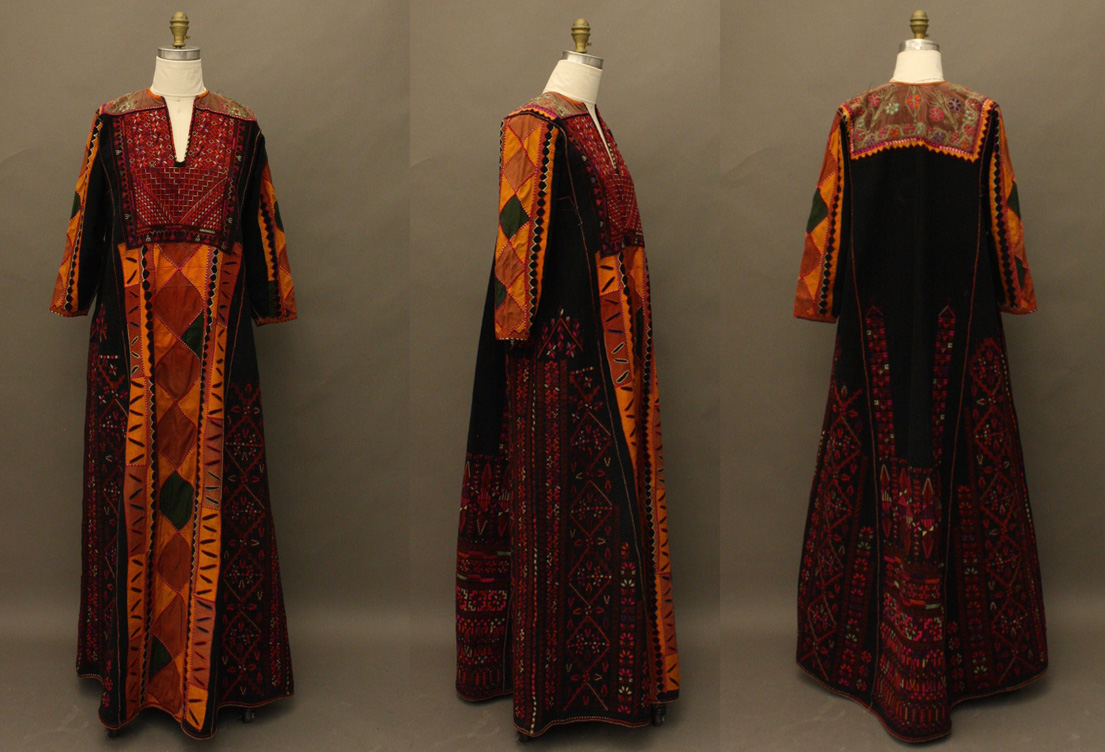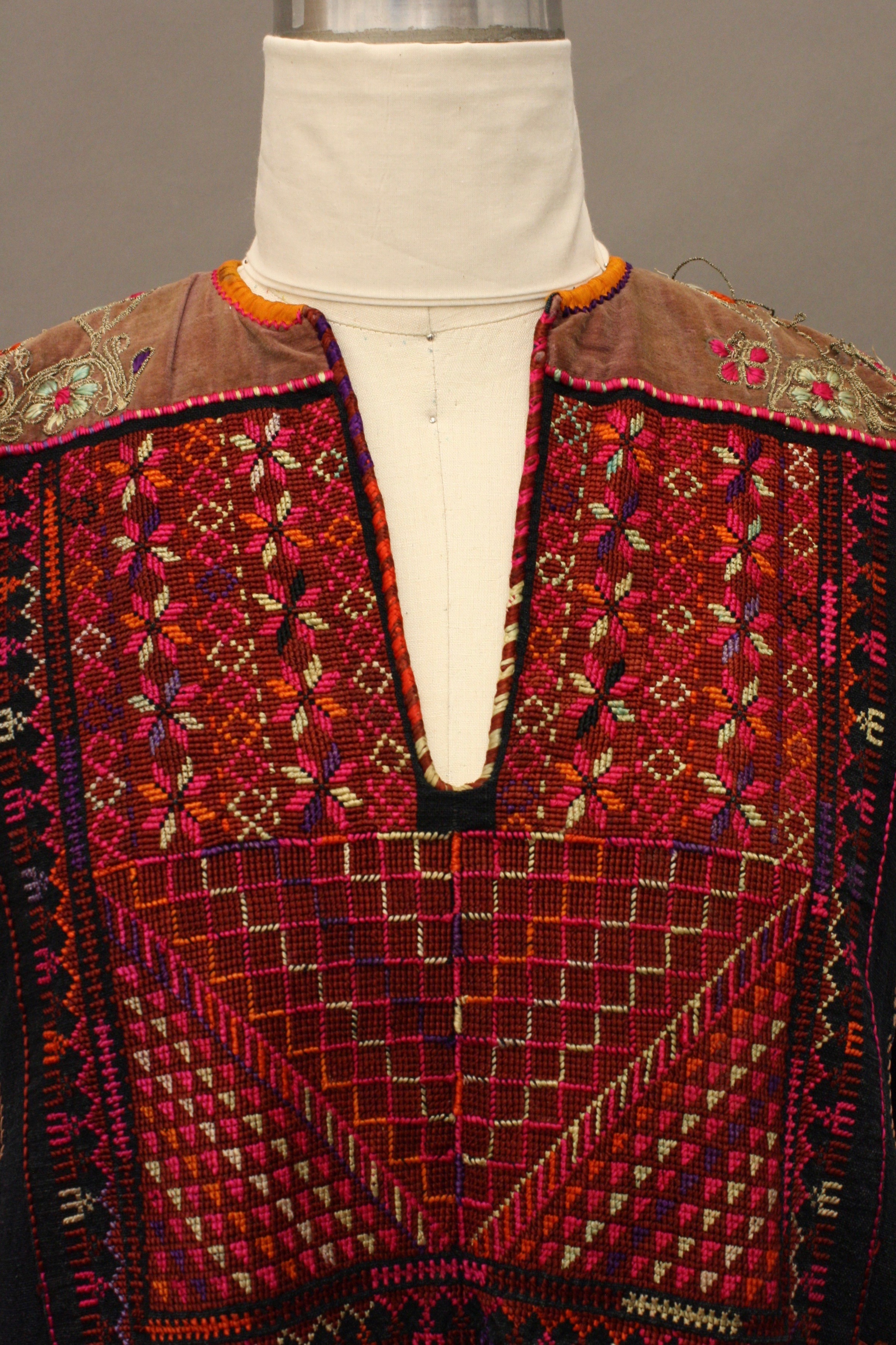
Blog post by Amanda Denham MA ’17
Part of my job here at the Cornell Costume and Textile Collection is to research and evaluate our items to determine how they contribute to our collection as a whole. Collections are just that: they are a sum of their parts. Sometimes I open a box and find hundreds of nearly identical ostrich feathers and other times I find a single, unique item with exquisite construction, detail, and condition that hint at its historical and sociopolitical significance.
This gown is one of those pieces.

The cloth is made of linen and every seam was completed entirely by hand. Hand stitched appliqué adorns the lengths of each sleeve and the center of the gown creating a diamond pattern in orange, gold, and black. Swirling, floral embroidery motifs cover the top of the bodice while geometric patterns climb up the gown from the hem of the skirt.
From the end of the Ottoman Empire to 1948, working class women in Palestine had more spare time than they did spare change. And so it was during this time that intricate, labor intensive and beautiful ways of embellishing garments and headdresses developed (Saca 2007: 9).
According to Professor Iman Saca, the chest panel, called a qabbah, identifies a wearer with a particular region through color and motif (Saca 2007: 15). The other features of a gown like this are regionally specific as well, including the shoulder piece (radah) and the front skirt (hijjer).
At the age of 7, young girls would begin learning to sew and embroider from their grandmothers. By the time they married they would have sewn and lavishly embroidered their entire wedding trousseau – the personality of the maker would be embedded in the craftsmanship and color, while her regional identity was shown through motifs.
 Donated by Nevart Yaghlian in 1996, Yaghlian identifies this garment as a wedding gown from Na’ney, Palestine – a city outside of what is now called Tel Aviv, Israel. This wedding gown, or Jallayeh, belonged to Yaghlian’s mother and was one of the few things preserved when her family fled from Na’ney to Gaza in 1948.
Donated by Nevart Yaghlian in 1996, Yaghlian identifies this garment as a wedding gown from Na’ney, Palestine – a city outside of what is now called Tel Aviv, Israel. This wedding gown, or Jallayeh, belonged to Yaghlian’s mother and was one of the few things preserved when her family fled from Na’ney to Gaza in 1948.
References:
Saca, I. & Saca, M. Embroidering Identities: A century of Palestinian clothing. The University of Chicago. Chicago, IL: 2006.
Amanda Denham received a Master of Arts in Apparel Design from Cornell University and a Bachelor of Arts in Textiles from Kent State University. She currently works as a research assistant in the Cornell Costume & Textile Collection.




